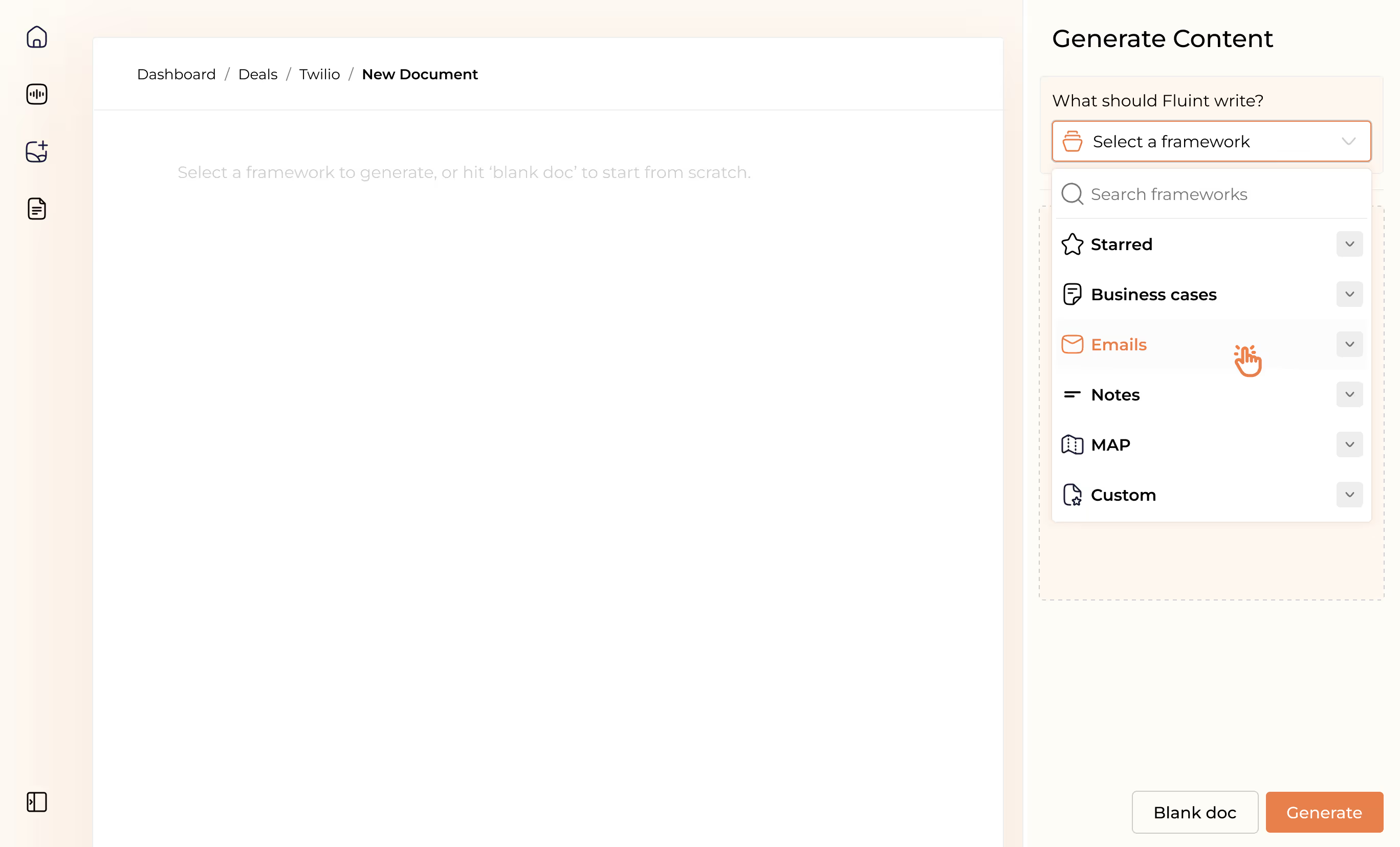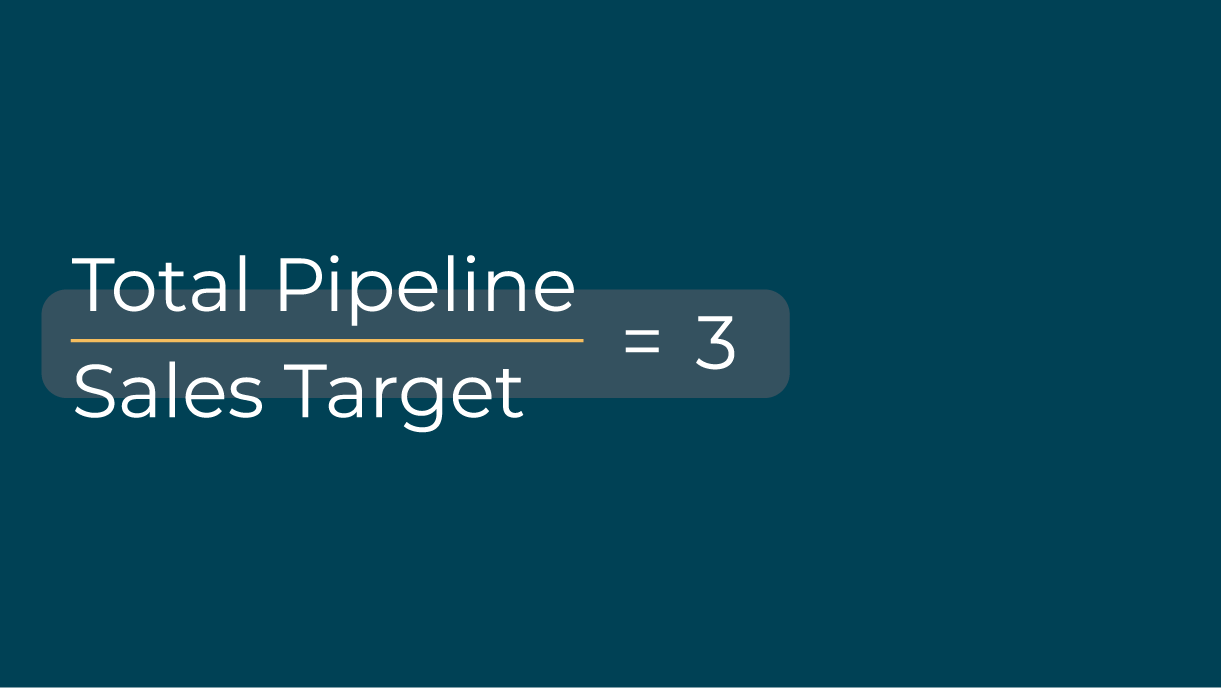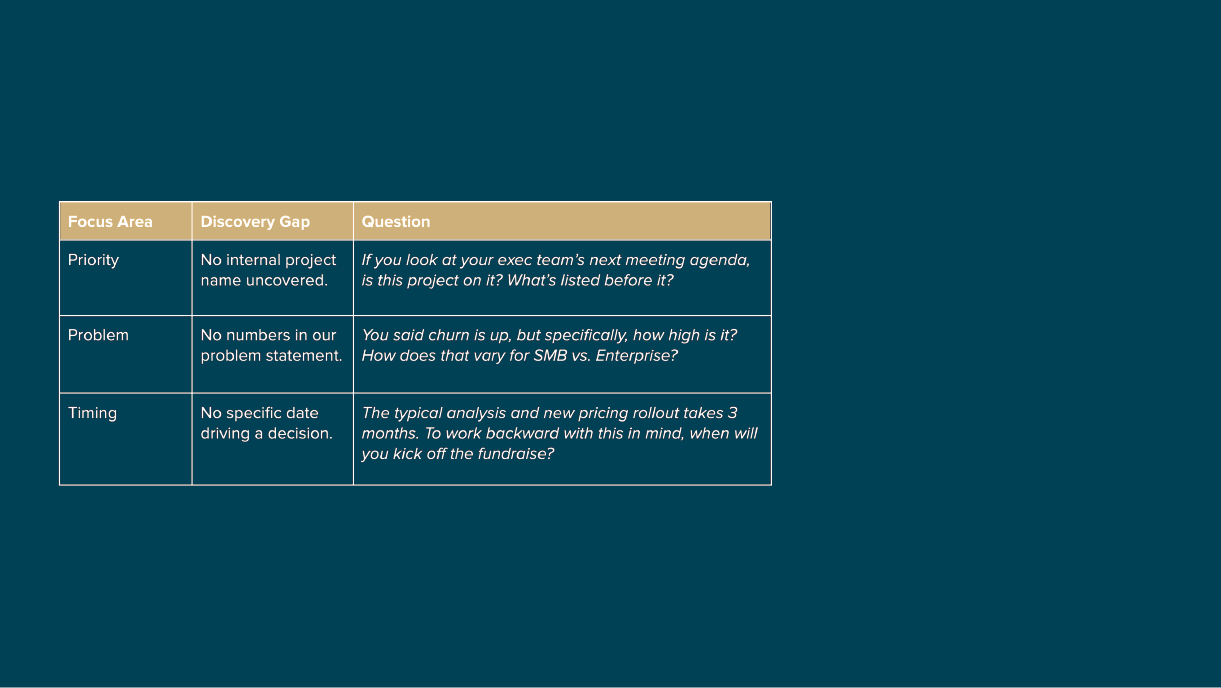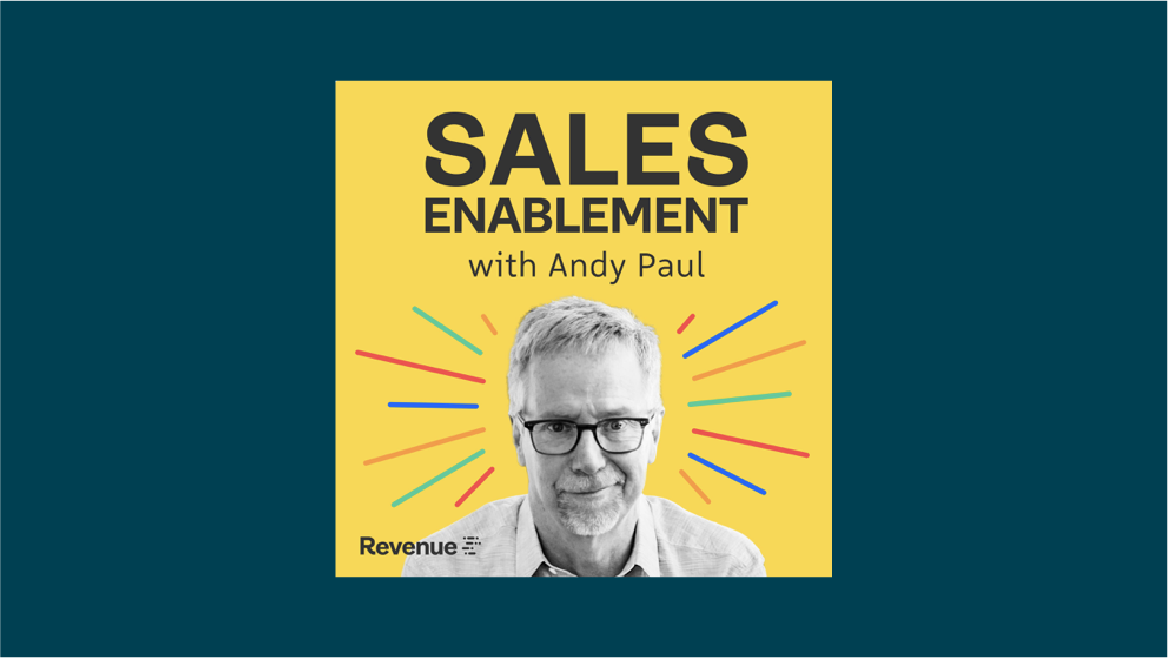Minimum Viable Sentences: A Framework for Crazy Productive Sales Conversations
Sellers have two basic tools — conversations and content. All sellers do is spoken, or written.
Writing compelling sales materials, to guide your champion’s internal meetings, is a powerful way to sell. But in many ways, effective content relies on quality conversations.
The problem is most sellers are terribly inefficient in their sales conversations.
A lack of trust can be a barrier to quality conversations. But beyond this, sellers often force buyers to suffer through long, rambling sentences that aren’t as thoughtful as they can be.
This slows the amount of ground you can cover, requires more time to get on the same page, and introduces all kinds of tangents.
For example, you might ask, “So, how could this work for your team?” Before sharing a customer story, detailing a few more examples responses to choose from, and finishing with, “So yeah, any thoughts?”
Meanwhile, your prospect understood what you were asking in the first few seconds, has been waiting to talk, and has an entirely different (and more helpful) direction to head.
So what’s a sales rep to do about it?
The Minimum Viable Sentence Framework
The answer is creating Minimum Viable Sentences (MVS). I imagine you’re familiar with the MVP. A Minimum Viable Product. This is similar. An MVS is:
Using the fewest words needed to move a conversation forward.
An MVS can be a question, or a statement replying to a question. It’s built one step at a time, with complexity introduced as the conversation continues.

Here are the three parts of an MVS:
- Goal: a single, shared objective between you and a buyer.
- Necessary Context: Reduce asymmetries that can lead to unproductive responses.
- Call to Reply: a signal for your counterpart to continue in a specific direction.
Let’s use an example.
Let’s say you’re selling customer experience software, and trying to determine how the rest of your sales cycle will unfold for a particular deal. You might share the following:
If we did a pilot this month, how would you share data on customer LTV?
This sentence is just 15 words.
In it, you’ve included a goal (sharing sensitive data for a pilot), a timeframe (this month), the context (the focus of a pilot is customer lifetime value, which is a function of revenue, retention, and margin), and you’ve posed a question. Then, you stop to listen.
The MVS wasn’t:
As the Success Director, I know you’re always trying to keep customers engaged, and I also know you’ve been trying to grow revenue from each account, so we want to prove out how we can help you get visibility into data on that.
For example, we’re finding investors are really focused on these types of metrics, revenue expansion and retention, during diligence. Especially in a tight funding market, you need to be really fast in responding with clear, accurate numbers.
So, I’m thinking that if we did some type of pilot to show off our platform to your team, they could see how easy it’d be to quickly get access to the types of metrics you have to report during diligence. Like if Lifetime Value was dropping from $15K to $10K or something like that, you’d want to see that before talking to investors even.
But it can be hard to access customer data to start off a pilot sometimes in my experience, so we’d want to see if it made sense to do a pilot, or just carry on with a team demo with sample data in there. Wondering what you think the process for getting access to you customer data might look like? Who would have to be involved in that and how would we get the right approvals?
That rambling paragraph was 221 words, and far more common in sales conversations. Why?
The well-meaning sales rep is trying to:
- Demonstrate they listened (mentioning the fundraise)
- Share new insights (current capital climate)
- Amplify the problem (diligence is tough)
But at the same time, a long list of tangents were opened for the prospect to wander down. The heart of the question was completely buried.
Now, to the response. If a prospect is replying to the MVS above, they might say…
We’d just talk with Sarah, she’s our Salesforce admin. She knows how to pull account data, and can access billing data that’s kept in our warehouse.
…giving the sales rep some insight into how to easy or difficult the pilot process might be.
However, if the rep led with Option B, the run-on paragraph, the prospect may have been lost in the clutter, landing on an entirely different train of thought.
Well, we’re not really planning for a fundraise until much later in the year, and our CFO is really the one who handles everything that relates to reporting data back to the investors. So maybe we could catch up later in the year, when it’s looking like we’re getting closer to diligence, and our CFO can get involved?
Of course, this is a semi-extreme example. But you can see the point. By default, our conversations are weighed down by too many words.
It’s rare for a rep to pause, think quietly for an uncomfortable number of seconds, and reply with a single yet intentional sentence.
5 Practices for Building an MVS
This may feel foreign, but know that you’ll be able to use the MVS without formulas and frameworks. These concepts will become part of a mental model you can quickly draw on during your conversations.
1. Set a specific, narrow goal for each conversation.
The MVS requires a great deal of thoughtfulness. When we’re not sure what we’re trying to leave a conversation with, we compensate with longer sentences that let us “think out loud.” We try to work out our point of view as we go.
Blaise Pascal, famously said, “I would have written a shorter letter, but I did not have the time,” because distilling a sentence into its essence is hard.
Before you start a conversation, pause. What’s the one point you need to impress, or question you need answered?
2. Build conversations one sentence at a time.
Product teams build software one feature at a time, releasing the minimum functionality needed to deliver value. This way, they can iterate with customer feedback. It’s the best way to know they’re headed in the right direction, without waste.
Take the same approach in your sales conversations. Pause, listen, then build your next sentence based on your buyer’s feedback. Consider our example above. This is how you’ll keep your conversation headed in a productive direction.
(Note: the MVS is key when talking to executives. If you find yourself being cut off before you’re done speaking, it’s a sign they lost you, you over-engineered your question, or you're heading in an unhelpful direction.)
3. Focus on your counterpart’s viewpoint.
The MVS isn’t for selfish, impatient people. It requires a great deal of selflessness.
To use the MVS, you’ll need to focus on what’s most helpful for your counterpart to hear. Consider their current context, incentives, and frustrations. Then, form your sentences accordingly. That’s the way to communicate with complete yet succinct sentences.
4. Use data, not stories.
I know. Storytelling is an art form in sales. But often, if we’re not sure we’re being clear, we’ll provide an unsolicited anecdote or tell a story to illustrate our point. However, inherent to a story is more detail than what’s needed to move a conversation one step forward.
The alternative is data. Using a specific data point forces you to research the topic, and a single metric can be worth 100 words.
For example, let’s say you manage a team of Account Executives (AE). You’re meeting with a colleague managing the Business Development Representatives (BDR) supporting your AE’s.
Rather than sharing how stressed your AE’s feel after falling behind on quota, and the story of a BDR who’s ramping slowly to explain why, do your research and say, “How can we get BDR-qualified pipeline to $50K per rep, from the $32K it’s at today?”
5. Highlight one strong point, not all of them.
Neil Rackham studied expert negotiators to figure out why they’re so influential. He noticed most people try to influence by sheer force. Stacking up a volume of arguments to tip the scales in their favor.
But experts do the opposite. They present fewer points, because as Rackham says in The Effective Negotiator, “A weak argument generally dilutes a strong one.” Lead with your most compelling content, leave the rest out.
---
To be clear, I’m not suggesting we create Twitter IRL. Plenty of interactions in sales call for storytelling and off-the-cuff comments. This strategy is an antidote to the fluff filling the typical sales conversation.
Try out the MVS with a few buyers and you’ll quickly see where the concept is most helpful.
Finally, this isn’t just a thing for type A people. This is for everyone — whether you’re a seller, manager, enabler, or other sales leader. We’re all in meetings with other humans, where we’ll benefit from bringing more speed and accuracy to the conversation.
(Yes, I fully appreciate the irony of using 1,500 words to explain the concept of an MVS.)
Why stop now?
You’re on a roll. Keep reading related write-up’s:
Draft with one click, go from DIY, to done-with-you AI
Get an executive-ready business case in seconds, built with your buyer's words and our AI.

Meet the sellers simplifying complex deals
Loved by top performers from 500+ companies with over $250M in closed-won revenue, across 19,900 deals managed with Fluint

Now getting more call transcripts into the tool so I can do more of that 1-click goodness.



The buying team literally skipped entire steps in the decision process after seeing our champion lay out the value for them.


Which is what Fluint lets me do: enable my champions, by making it easy for them to sell what matters to them and impacts their role.








.png)